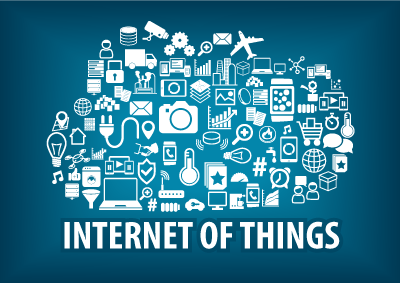This post has already been read 9063 times!

CEO of DCG Technical Solutions.
The new age of the so-called Internet of Things (aka IoT) is about to be ushered in and brings with it a whole host of opportunities and challenges. Providing the figures stack up and the technology costs are outweighed by efficiency savings, the IoT is going to mean a paradigm shift in the whole concept of supply chain management (SCM). This article looks at what the IoT is, what changes we might soon see in SCM and the role of the cloud in what could aptly be termed “SCM 2.0.”
Understanding the The Internet of Things
The Internet of Things concept has been gathering strength since the early 1990s when those at the cutting edge of technology began exploring how far digital networks could eventually extend into our day-to-day lives. Terms such as ‘ubiquitous computing,’ and ’embodied virtuality’ hinted at what was to finally emerge, from the brilliant minds at work in the MIT and other big US research universities, as the Internet of Things.
The IoT works by fitting RFID tags, embedded processors and wireless communication hardware to objects, from wearable tech and clothing to irons and toasters all the way up to vehicles, buildings and city infrastructure. With this set-up, practically any object in existence can become ‘smart,’ sending and receiving streams of data and responding to remote commands.
What Happens When SCM Meets the IoT?
When most people think of the IoT they imagine wearable technology, clothing, jewellery, etc. In other words, they look at the way in which this ‘network of networks’ will affect them as an end user.
IoT is going to impact the entire supply chain, from making, moving, storing and using products. Share on XSupply Chain Management (SCM) professionals need to take a much wider view because the IoT is going to revolutionize everything, from how products are manufactured to warehousing, transportation and logistics in general.
For some time it has been clear that the old linear, siloed concept of the supply chain is outdated, particularly when it comes to the constantly evolving field of IT and iterative development. The IoT is going to underline this fact with complete digital monitoring of the whole journey from source to end user and the need for rapid and proactive adaptation to circumstances. For example, in a world where the city’s infrastructure is providing real-time traffic flow data, it is no longer going to be acceptable for a distributor to blame traffic for delays in goods.
The supply chain of the future is going to be communicating in all directions at once, with individual processes acting more like strands in a digital web than links in a chain.
The IoT is also going to change the face of personnel deployment. Why would any company employ 15 forklift operators for 15 warehouses when they can just as easily procure automated forklifts and one experienced operator to oversee the fleet from a central control center.
And if forklifts can be fitted out with speed and movement systems and automated warehouse systems can be set to automatically monitor and adjust their movement will there even be a need to employ that one operator – or rent space for a control center?
The Role of the Cloud in IoT
 By now it should be obvious where the cloud is going to fit into all of this. Recent years has seen a steady movement from ERP software to cloud-based ERP, and multi-party networks using SaaS and PaaS architecture. This is going to increase exponentially when the IoT gets into full swing and cloud service providers will need to adapt to cope with a new generation of smart objects.
By now it should be obvious where the cloud is going to fit into all of this. Recent years has seen a steady movement from ERP software to cloud-based ERP, and multi-party networks using SaaS and PaaS architecture. This is going to increase exponentially when the IoT gets into full swing and cloud service providers will need to adapt to cope with a new generation of smart objects.
Take hosting, for instance. A competent cloud-based or hybrid cloud hosting company will be used to managing significant data streams from multiple virtual servers but will need to prepare themselves for a data explosion caused by the 25 to 50 billion extra ‘things’ expected to be connected to the internet by 2020?
IoT will swell the cloud to new dimensions. Companies need to be prepared for the new architecture requirements. Share on XWarehouse management is another example, particularly relevant to SCM, offering incredible opportunity but with huge responsibility. The best cloud-based services will soon be able to engage in two-way communication with smart devices in multiple warehouses and they will need to be ultra-reliable. In the past, if a fridge failed, a shipment of food products would be ruined. But if cloud-based temperature control software controlling multiple warehouses fail – or is hacked – the results would be catastrophic.
Herein lies one of the biggest challenges standing in the way of the IoT: the issue of safety and data security.
IoT and Security
Many people are understandably nervous about what happens to all the data flying about from node to node in the Internet of Things. They wonder about what kind of a profile is being built from that data and the implications if this gets into the wrong hands. Business owners worry about choosing the right ERP or network services at a price that they can afford. It is up to service providers to reassure them that they can cope not just with how things are now but how things may be in the future. Flexibility and scalability will be highly desirable attributes.
Despite the uncertainty, billion dollar IoT investments are already being made by the likes of IBM and Cisco. This alone signifies that something big is happening in the digital world and SCM professionals would be well advised to start evaluating their employer’s or clients’ current readiness while keeping a close eye on developments.
Essential Reading on the Internet of Things
[contentblock id=8 img=gcb.png]
- SCM 2.0: How the Internet of Things Will Change Everything - October 12, 2016
